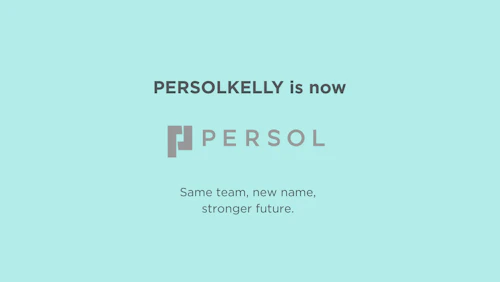The Power of "Let Them": A Modern Leadership Mindset
Authored by Kurt Gillam, Executive General Manager, PERSOL Australia and New Zealand, ANZ • 5 min read
In leadership, there's an ingrained belief that we must be in control of people, outcomes, perceptions, and decisions. We feel responsible for our team's success, for harmony across departments, and for ensuring that things go as planned. But what if one of the most powerful things we can do... is let go?
I recently came across the "Let Them Theory" by Mel Robbins, and it's shifted how I approach leadership. At its heart, it's about boundaries, emotional intelligence, and trusting people to show you who they are without trying to change or control them.
What Is the "Let Them Theory"?
Mel Robbins explains it best:
"If they don't invite you, let them.
If they don't support you, let them.
If they don't see your value, let them."
At first glance, it might seem passive or that you are giving up. But it's the opposite. The "Let Them" mindset is intentional. It encourages you to step back, not out of disengagement, but out ofwisdom. It's not about giving up, it's about giving space. Space for clarity. Space for choice. Space for truth to rise to the surface.
The Hidden Cost of Control
Leadership often makes us feel we need to manage everything. We chase results, fix problems, and try to please everyone.
But the more we control, the more we can disconnect from our teams, our purpose, and ourselves.
"Let Them" invites reflection instead of reaction. It reminds us not every issue need fixing.
Let Them... Be Who They Are
In leadership, we often jump in to fix behaviours. Someone's late? We send reminders. Resistant to feedback? We try to shift their mindset. Disengaged? We feel it's on us to re-engage. A difficult customer? We rush to resolve. But what if we simply... let them?
"Let them" isn't about giving up, it's about observing. Giving people the space to be who they are, so you can lead from truth, not assumption.
Let someone interrupt, and you learn about their self-awareness. Let someone miss deadlines, and you see their accountability. That's leadership intelligence and it helps you make better decisions.
Let Them Leave
Here's one of the hardest things I've had to embrace as a leader: some people are not meant to stay. And that's okay.
We spend too much energy trying to re-engage those who've already checked out. Sometimes, the best move is to let them go.
Leadership isn't about holding on it's about holding space for the right people. True leadership is not about keeping everyone it's about keeping and attracting the right people. And of course, everyone moves on at some point so it's not about stopping this, it's about handling this better than the competition.
Let Them Choose
A big part of the "Let Them" mindset is trusting others with choice. In our ambitions to be a great leader, we often unknowingly strip decisions and choices away from our teams through micromanagement,
over-planning, and assumption-making. Sometimes it's just feeling that you need to do something as a leader, but I remember once being told earlier in my career by one of my leaders that sometimes doing nothing
in certain situations can also be great leadership.
It's about creating an environment where people can make empowered choices and live with the consequences.
When we let people choose...
- How they want to show up
- How they engage with the mission
- How they respond to feedback
- How much energy they bring
...we see who they are. And from there, we lead accordingly not reactively.
Let Yourself Let Go
One of the most transformative aspects of the "Let Them" theory is what it asks of you as a leader.
Whilst this concept isn't about letting go or gain giving up, it invites you to free your mind and energy of:
- Being understood by everyone
- Being liked by everyone
- Having to fix every conflict
- Proving your value, for someone has given you this role because they already value you!
There is freedom in letting go. There is power in not needing to convince. And there is clarity in seeing what people choose when you stop managing their image of you.
As a leader of our recently re-branded PERSOL, I've come to realise that we often tie our identity to outcomes. We see team performance as a reflection of our worth. We internalise every resignation. We replay every piece of critical feedback or media or conversation with our managers.
But when we embrace "Let Them," we stop chasing perfection and start modeling resilience, grounding, and trust, with a whole heap of energy to focus on what and who matters most.
The "Let Them" Lens
Here are a few real-life examples:
- A peer interrupts you - let them, and observe the dynamic.
- A report resists feedback - coach when they're ready, not before.
- A candidate chooses another role - trust it's the right decision for them.
- A high performer disengages - have the conversation, but don't force the outcome.
Final Thoughts
"Let Them" is not passive - it's powerful. It frees us from chasing, fixing, and overthinking, so we can lead with purpose.
In a world obsessed with control and outcomes, this mindset brings us back to what really matters: energy, alignment, trust, and truth.
So next time you feel the urge to step in or hold on...
Let them.
And lead from there.
Ready to attract and retain top talent? Discover how PERSOL can help build your leadership team.
Related Articles
PERSOL’s DEI Commitment recognised at 2025 SA...
The Power of Diversity, Equity & Inclusion: Why it matters more than ...
A Unified Future: From PERSOLKELLY to PERSOL
On 31 July 2025, PERSOLKELLY across the Asia Pacific will officially ...
Championing Diversity: A Focus on Women in En...
Boosting female representation in engineering tackles skills shortage...
Fostering an Entrepreneurial Mindset in IT De...
Transform IT departments into business enablers by fostering an entre...




